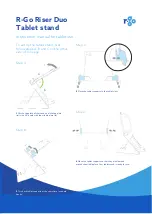
AN-MPU-x000A-01
Document Number: AN-MPU-x000A-01
Page 4 of 14
Revision: 1.1
Date: 06/12 /2015
3.
COMPASS DESIGN GUIDELINES
3.1.
MAGNETIC DISTORTION
Distortions in the magnetic field are often observed within electronic devices and affect the angle accuracy of magnetic data. There
are two basic types of magnetic field distortion.
Hard Iron Distortion:
This is a scaling of the sensed magnetic field, caused by magnetized or rare earth magnetic materials. Since the
magnetic field is constant, it can be compensated for by subtracting the additive field, as long as the field does not cause the
compass to saturate. Common devices which cause Hard Iron distortion include speakers, motors, and auto-focus actuators. Fig. 1
shows the change in sensed magnetic field from a 30 µT field caused by Hard Iron distortion.
Figure 1. Change in Magnetic Field Caused by Hard Iron Distortion
Soft Iron Distortion:
This is the result of the magnetic field bending around materials which interact with a magnetic field. When
placed near a sensor, the material may bend, or attenuate the field causing a reduction in sensitivity or angular accuracy of the
magnetometer. Common sources of soft iron distortion include iron, cobalt, nickel, and their alloys, ferritic and martensitic stainless
steels (SUS400, SUS 6000, etc.). These materials may be used in a wide variety of common components, including heat sinks,
fasteners, hinges, connectors, batteries, spring steel dome switches, chip capacitors, and some integrated circuits. Fig. 2 shows the
change in sensed magnetic field caused by Soft Iron distortion, which has the effect of transforming the typically spherical sensed
field into an ellipsoid.
Figure 2. Change in Magnetic Field Caused by Soft Iron Distortion
Ferritic, Martensitic (400 series), and work-hardened Austenitic (300 series) stainless steels are “soft iron” materials, and can affect
the sensed magnetic field. Stainless steels which may not have a significant interaction with magnetic fields in their annealed state,
may exhibit an increased interaction when cold-worked. This may occur during a stamping, forming, or bending process which
commonly occurs. Therefore, it is important to evaluate both the mechanical process, or to examine completed parts, as well as the
material to be used.
Materials which have no (or only very weak) interaction with magnetic fields include copper, aluminum, plastic, magnesium, brass
(Cu + Zn), SUS305, titanium, gold, silver, and some stainless steels.
In discussion, the term “Hard Iron” commonly refers to a rare earth magnetic material, which has a permanent magnetism. Similarly,
“Soft Iron” commonly refers to an iron (Fe) containing substance that may be magnetized. It is important to note that both
Hard Iron
Distortion
and
Soft Iron Distortion
may be exhibited by either material to varying degrees.
-40
-20
0
20
-20
-10
0
10
20
-20
-10
0
10
20
-20
0
20
-20
-10
0
10
20
-20
-10
0
10
20
































